-
 Bitcoin
Bitcoin $107,352.1067
0.28% -
 Ethereum
Ethereum $2,429.3531
-0.90% -
 Tether USDt
Tether USDt $1.0001
-0.02% -
 XRP
XRP $2.1894
4.62% -
 BNB
BNB $646.7968
0.36% -
 Solana
Solana $147.4290
4.03% -
 USDC
USDC $0.9998
-0.02% -
 TRON
TRON $0.2756
1.52% -
 Dogecoin
Dogecoin $0.1630
1.14% -
 Cardano
Cardano $0.5612
1.18% -
 Hyperliquid
Hyperliquid $37.0580
-0.05% -
 Bitcoin Cash
Bitcoin Cash $496.9410
-0.09% -
 Sui
Sui $2.7318
3.19% -
 Chainlink
Chainlink $13.1503
0.58% -
 UNUS SED LEO
UNUS SED LEO $9.0766
0.55% -
 Avalanche
Avalanche $17.7220
1.46% -
 Stellar
Stellar $0.2380
1.52% -
 Toncoin
Toncoin $2.8439
0.38% -
 Shiba Inu
Shiba Inu $0.0...01143
1.84% -
 Litecoin
Litecoin $85.8053
1.47% -
 Hedera
Hedera $0.1483
2.70% -
 Monero
Monero $314.3240
2.12% -
 Bitget Token
Bitget Token $4.6725
0.77% -
 Dai
Dai $1.0000
0.00% -
 Polkadot
Polkadot $3.3555
1.28% -
 Ethena USDe
Ethena USDe $1.0001
0.02% -
 Uniswap
Uniswap $7.0890
2.64% -
 Pi
Pi $0.5355
-3.40% -
 Pepe
Pepe $0.0...09393
1.06% -
 Aave
Aave $256.8136
-1.90%
How to predict the rebound strength after the historical huge negative line?
A historical huge negative line in crypto often signals oversold conditions, and when combined with bullish patterns like a tail or engulfing candle, may indicate a strong rebound.
Jun 28, 2025 at 11:14 pm
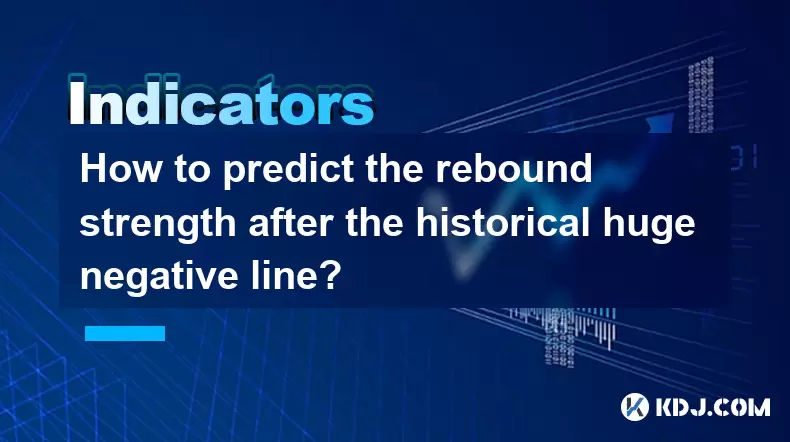
Understanding the Historical Huge Negative Line
In cryptocurrency trading, a historical huge negative line refers to a candlestick pattern where the price drops significantly within a single time frame, often accompanied by high trading volume. This type of movement can be triggered by macroeconomic news, regulatory changes, or sudden market sentiment shifts. Recognizing such a pattern is crucial for traders who aim to predict rebound strength, as these events tend to create oversold conditions that may lead to sharp recoveries.
The first step in analyzing rebound potential is identifying whether the negative line occurred at a key support level or after a prolonged downtrend. If it appears near historical lows or major psychological levels, the chances of a strong bounce increase significantly.
Technical Indicators That Help Predict Rebound Strength
Several technical indicators can assist traders in assessing how strong a rebound might be after a large negative candle:
- Relative Strength Index (RSI): An RSI below 30 typically indicates oversold conditions, suggesting a possible reversal. A quick recovery following a plunge into this zone may indicate strong buying pressure.
- Moving Average Convergence Divergence (MACD): A bullish divergence on the MACD histogram could signal an upcoming rally, especially if the histogram starts expanding upward while prices continue falling.
- Volume Profile and On-Balance Volume (OBV): A surge in volume during or after the negative candle suggests accumulation, which could foreshadow a strong rebound.
These tools should not be used in isolation but rather in combination with price action analysis to form a comprehensive view.
Price Action Patterns Around the Negative Candle
Analyzing the price behavior immediately before, during, and after the huge negative line can provide valuable insights into the likelihood and magnitude of a rebound. Look for the following patterns:
- Tail Formation: A long lower shadow on the negative candle suggests rejection of lower prices and potential for buyers stepping in.
- Bullish Engulfing Pattern: If the next candle completely engulfs the bearish candle and closes higher, it signals a strong reversal possibility.
- Immediate Follow-through: A rapid move back above the midpoint of the negative candle increases the probability of a robust recovery.
These patterns help confirm whether the selling pressure has truly subsided or if further declines are likely.
Historical Data Comparison and Market Context
One effective way to gauge the strength of a potential rebound is to compare the current situation with historical data from similar events. For example:
- Past Reactions After Large Red Candles: By analyzing how the same cryptocurrency responded after previous sharp declines, traders can estimate average bounce magnitudes and durations.
- Market Conditions: Was the drop part of a broader market selloff or isolated to a specific coin? Broader corrections tend to see slower recoveries compared to asset-specific dips.
- Bitcoin's Correlation: In most cases, altcoins follow Bitcoin’s direction. Checking Bitcoin’s position relative to its own support or resistance levels can add context to the expected rebound strength.
Using platforms like TradingView or CoinMarketCap historical charts, traders can perform comparative studies to refine their predictions.
Risk Management and Position Sizing Considerations
Even with a strong technical setup, predicting rebound strength involves uncertainty. Therefore, implementing proper risk management techniques becomes essential:
- Setting Stop Loss Levels: Placing stop losses just below the low of the negative candle helps protect against further downside surprises.
- Trailing Profits: As the price moves upward, trailing stops can lock in gains while allowing room for the rebound to develop fully.
- Position Sizing: Avoid allocating too much capital based solely on the expectation of a rebound. Smaller entries allow for flexibility if multiple attempts are needed to confirm a trend change.
This approach ensures that even if the rebound doesn’t materialize as expected, losses remain controlled and manageable.
Frequently Asked Questions
Q1: Can I use Fibonacci retracement levels to predict rebound strength after a huge red candle?
Yes, Fibonacci retracement levels can be applied effectively in such scenarios. After a sharp decline, key retracement levels like 50%, 61.8%, and 78.6% often act as potential zones where the price may find support and initiate a rebound.
Q2: How important is volume when assessing a potential rebound?
Volume plays a critical role. A huge negative candle followed by a spike in volume during the recovery phase usually confirms genuine buying interest. Conversely, low volume during a bounce may suggest weakness and a false rally.
Q3: Should I focus only on daily candles or consider shorter time frames as well?
While daily candles provide a broader perspective, analyzing 4-hour or 1-hour charts can offer better entry points. Shorter time frames help identify micro-structures and momentum shifts that may not be visible on longer intervals.
Q4: Is there a difference between a huge negative line in a bull market versus a bear market?
Yes, rebounds tend to be stronger and faster in bull markets because dips are often seen as buying opportunities. In contrast, bear market rebounds may lack conviction and are more prone to failure unless supported by strong fundamentals or news.
Disclaimer:info@kdj.com
The information provided is not trading advice. kdj.com does not assume any responsibility for any investments made based on the information provided in this article. Cryptocurrencies are highly volatile and it is highly recommended that you invest with caution after thorough research!
If you believe that the content used on this website infringes your copyright, please contact us immediately (info@kdj.com) and we will delete it promptly.
- AI Token Taking Over: Why Smart Investors are Eyeing Audited Crypto Ruvi AI
- 2025-06-29 04:30:12
- Ethereum, AI Tokens, and Growth: Is Ruvi AI the Next Big Thing?
- 2025-06-29 04:30:12
- Hedera Price: Decoding Technical Signals and Upside Potential
- 2025-06-29 04:50:13
- Altcoin Rally on the Horizon? Decoding the Potential Boom
- 2025-06-29 04:35:12
- Vitalik Buterin vs. Worldcoin: The Battle for Pseudonymity's Soul
- 2025-06-29 04:52:14
- Crypto Coins: Market Shifts and the Best Picks in 2025
- 2025-06-29 05:05:12
Related knowledge
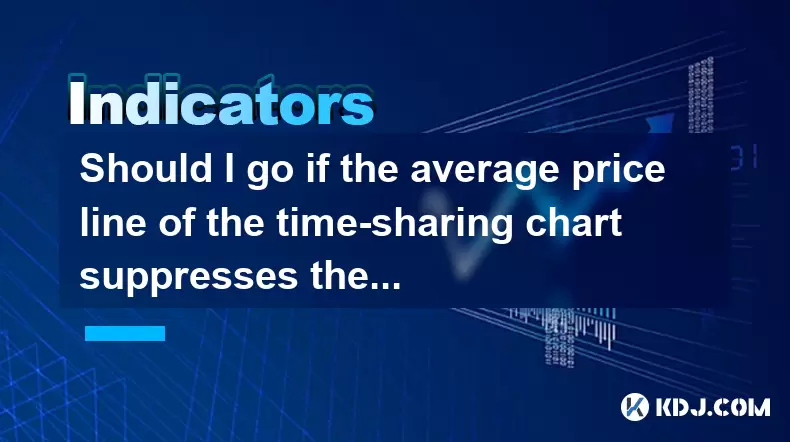
Should I go if the average price line of the time-sharing chart suppresses the rebound?
Jun 28,2025 at 05:14pm
Understanding the Time-Sharing Chart and Average Price LineThe time-sharing chart is a real-time chart used in cryptocurrency trading to visualize price movements over short intervals, typically within a single trading day. It provides traders with insights into intraday volatility and momentum. The average price line, often calculated as a moving avera...
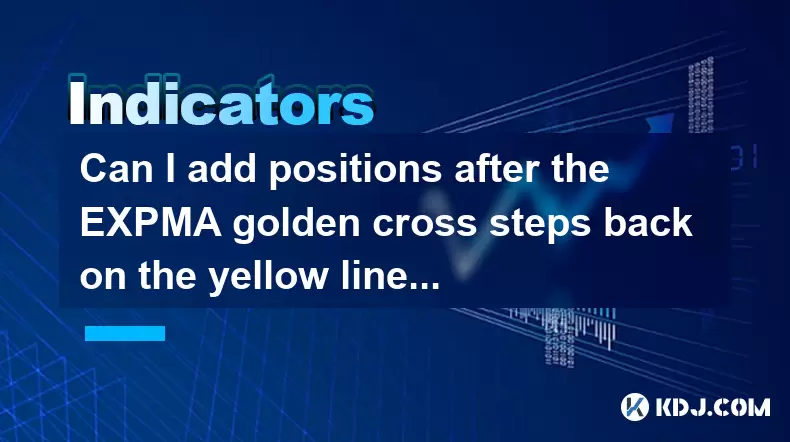
Can I add positions after the EXPMA golden cross steps back on the yellow line?
Jun 28,2025 at 11:57am
Understanding the EXPMA Indicator and Its RelevanceThe EXPMA (Exponential Moving Average) is a technical analysis tool used by traders to identify trends and potential entry or exit points in financial markets, including cryptocurrency trading. Unlike simple moving averages, EXPMA gives more weight to recent price data, making it more responsive to new ...

How to operate the next day after the daily limit is released with huge volume?
Jun 28,2025 at 12:35pm
Understanding the Daily Limit and Its ReleaseIn cryptocurrency trading, daily limits are often set by exchanges to manage volatility or during periods of high market activity. These limits can restrict how much an asset's price can fluctuate within a 24-hour period. When the daily limit is released, it typically means that the price cap has been lifted,...
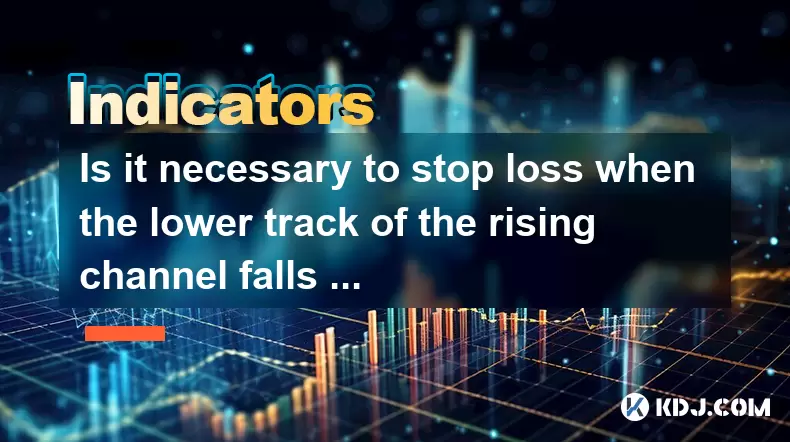
Is it necessary to stop loss when the lower track of the rising channel falls below?
Jun 28,2025 at 05:29pm
Understanding the Rising Channel PatternThe rising channel pattern is a popular technical analysis tool used by traders to identify potential upward trends in asset prices. It consists of two parallel lines: an upper resistance line and a lower support line, both sloping upwards. The price action typically oscillates between these boundaries, offering o...
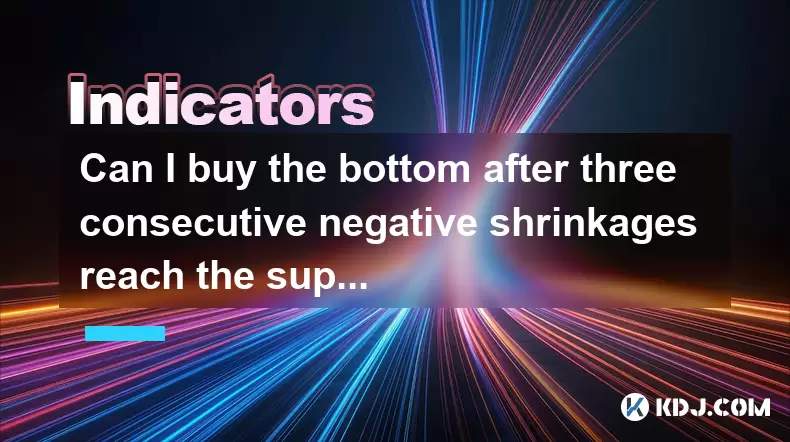
Can I buy the bottom after three consecutive negative shrinkages reach the support level?
Jun 29,2025 at 03:43am
Understanding the Context of Three Consecutive Negative ShrinkagesIn the cryptocurrency market, price patterns are often analyzed to predict potential reversals or continuations. A negative shrinkage refers to a situation where the candlestick body becomes smaller in a downtrend, indicating weakening selling pressure. When this happens three times conse...
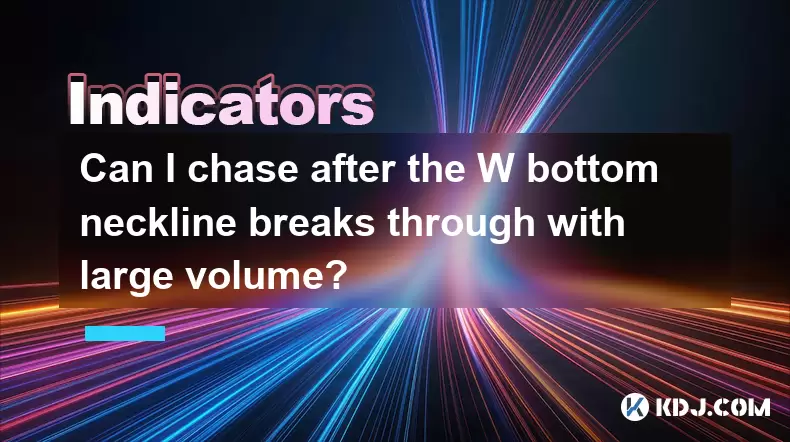
Can I chase after the W bottom neckline breaks through with large volume?
Jun 28,2025 at 07:28am
Understanding the W Bottom Pattern in Cryptocurrency TradingThe W bottom pattern is a common technical analysis formation used by traders to identify potential bullish reversals. In cryptocurrency markets, this pattern typically appears after a downtrend and signals that the selling pressure may be diminishing. The structure of the W bottom includes two...

Should I go if the average price line of the time-sharing chart suppresses the rebound?
Jun 28,2025 at 05:14pm
Understanding the Time-Sharing Chart and Average Price LineThe time-sharing chart is a real-time chart used in cryptocurrency trading to visualize price movements over short intervals, typically within a single trading day. It provides traders with insights into intraday volatility and momentum. The average price line, often calculated as a moving avera...

Can I add positions after the EXPMA golden cross steps back on the yellow line?
Jun 28,2025 at 11:57am
Understanding the EXPMA Indicator and Its RelevanceThe EXPMA (Exponential Moving Average) is a technical analysis tool used by traders to identify trends and potential entry or exit points in financial markets, including cryptocurrency trading. Unlike simple moving averages, EXPMA gives more weight to recent price data, making it more responsive to new ...

How to operate the next day after the daily limit is released with huge volume?
Jun 28,2025 at 12:35pm
Understanding the Daily Limit and Its ReleaseIn cryptocurrency trading, daily limits are often set by exchanges to manage volatility or during periods of high market activity. These limits can restrict how much an asset's price can fluctuate within a 24-hour period. When the daily limit is released, it typically means that the price cap has been lifted,...

Is it necessary to stop loss when the lower track of the rising channel falls below?
Jun 28,2025 at 05:29pm
Understanding the Rising Channel PatternThe rising channel pattern is a popular technical analysis tool used by traders to identify potential upward trends in asset prices. It consists of two parallel lines: an upper resistance line and a lower support line, both sloping upwards. The price action typically oscillates between these boundaries, offering o...

Can I buy the bottom after three consecutive negative shrinkages reach the support level?
Jun 29,2025 at 03:43am
Understanding the Context of Three Consecutive Negative ShrinkagesIn the cryptocurrency market, price patterns are often analyzed to predict potential reversals or continuations. A negative shrinkage refers to a situation where the candlestick body becomes smaller in a downtrend, indicating weakening selling pressure. When this happens three times conse...

Can I chase after the W bottom neckline breaks through with large volume?
Jun 28,2025 at 07:28am
Understanding the W Bottom Pattern in Cryptocurrency TradingThe W bottom pattern is a common technical analysis formation used by traders to identify potential bullish reversals. In cryptocurrency markets, this pattern typically appears after a downtrend and signals that the selling pressure may be diminishing. The structure of the W bottom includes two...
See all articles

























































































